Quick search
CTRL+K
Quick search
CTRL+K

Rio de Janeiro is one of the few cities in the world bringing as much joy and happiness just to hear the name of it. Here you will find samba style football, the colorful annual carnival, beaches of Copacabana and Ipenema, the Corcovado tram line and many other sights and activities which will make the trip memorable.
The highlights of the city are literally the distinctive Sugarloaf Mountain and the impressive Christ the Redeemer statue, which embraces and views upon the entire Rio de Janeiro. A trip to the statue is a must on a trip to the charming Brazilian metropolis. The statue and the panoramas from here are unforgettable.
In addition to the many opportunities for swimming and relaxing, Rio de Janeiro is also a city with a great cultural offer. Fine museums and interesting church buildings are numerous, and the cariocas, which is the local name for Rio de Janeiro’s inhabitants, make a difference as well. Their mood and happiness will surely go to you as a visitor.
Zona Sul is often the place to be as a tourist in the city. The neighborhoods of Botafogo, Catete, Flamengo and Gloria are areas with a lot of carioca soul, and Santa Teresa is worth visiting as well. If you want to experience more of historic Brazil and at the same time get out of the big city, you can enjoy a trip to Portuguese style Parati.
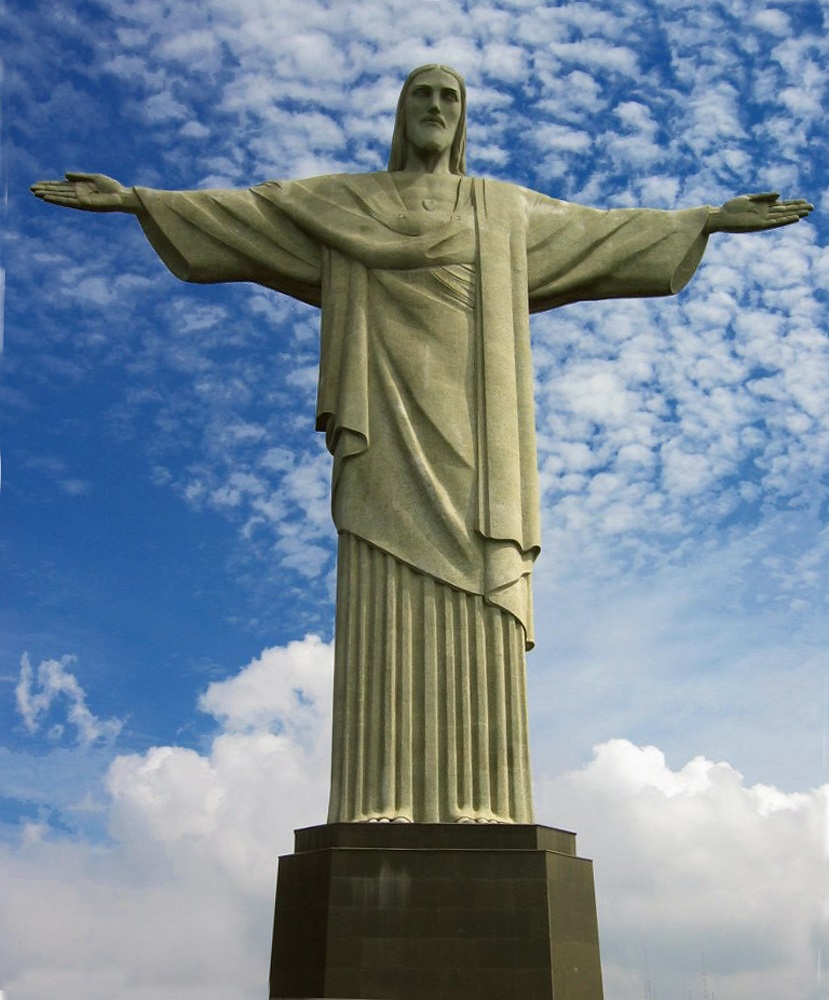
Cristo Redentor is Rio de Janeiro’s world-famous statue of Christ, which stands on top of the 710 meter high mountain Morro do Corcovado. The 30-meter-high statue is the city’s landmark, and a trip to the statue is often a must for visitors to the city. The trip up to the statue is an experience in itself, and the view from the top is unforgettable.
It was mainly the Brazilian engineer Heitor da Silva Costa and Carlos Oswald who designed the statue, while the French sculptor Paul Landowski created Cristo Redentor from the drawings. The statue was erected on the mountaintop in the years 1922-1931. Here, the 30 meter high statue with the 28 meter wide arms was built on top of an 8 meter high plinth.
The first proposal for a statue on the summit of Corcovado was made in the 1850s by the religious priest Pedro Maria Boss. The proposal was not approved, and when Brazil became a republic with separate state and church in 1889, the proposal was shelved. In 1920, Catholics in Rio de Janeiro again proposed a plan for a statue of Christ on the mountain, and it was a success.
Today, Cristo Redentor stands at the top of Rio de Janeiro, and the place looks almost inaccessible, but it is easy to get up to the foot of the statue. The best way is to take the Trem do Corcovado train, a cog railway that runs between Cosme Velho and the summit of Corcovado. From the mountain station, there are stairs the last way to the viewing platform where the statue of Christ stands.
Copacabana is the name of a district in the Zone Sul area. Until the middle of the 18th century, the place was called Sacopenapã in the local Tupi language, but then it got the name Copacabana. It happened after the construction of a chapel dedicated to the Virgin of Copacabana, and the Virgin’s name itself came from the city of Copacabana on Lake Titicaca.
Copacabana is best known for the approximately four kilometer long beach, which is one of the most famous in the world. The beach is picturesquely located along the Atlantic Ocean between Fort Duque de Caxias to the north and Fort Copacabana to the south. You can walk along Copacabana at the water’s edge or along the promenade along Avenida Atlântica, where there is a Portuguese-inspired mosaic pavement in geometric waves.
Along Copacabana there are hotels, restaurants and cafes and of course a lovely view of the Atlantic Ocean. There is also a vibrant beach life, and Copacabana’s beach is also often the center of various events for example the world championships in beach soccer, concerts and folk festivals such as New Year’s Eve, where it is believed that up to two million people gather along the beach to watch the city’s magnificent firework show.
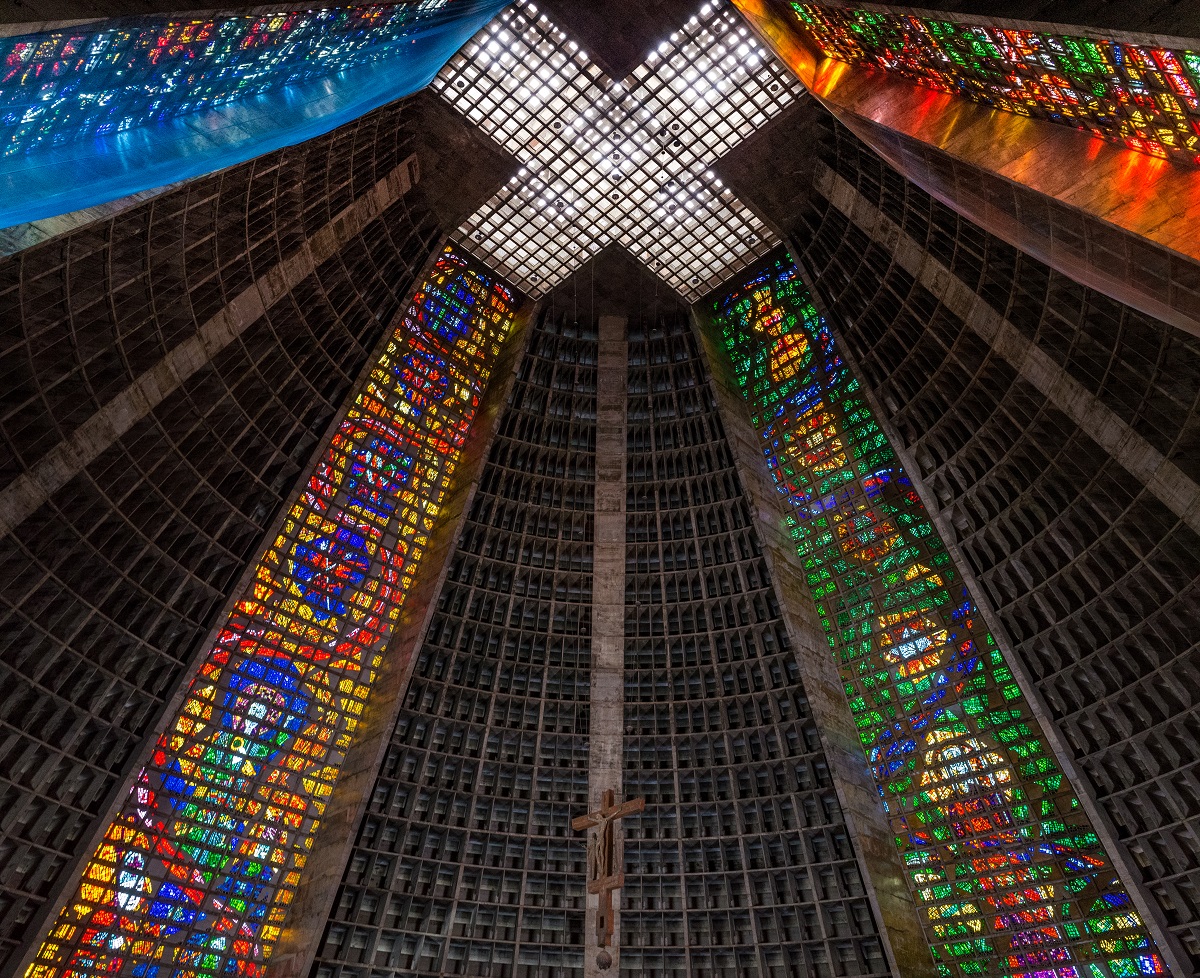
The Catedral Metropolitana is Rio de Janeiro’s Catholic cathedral. It is the seat of the Archbishop of São Sebastião do Rio de Janeiro and thus dedicated to Saint Sebastian, who is the patron saint of the city. The modern church stands as a Catholic church and also as one of the most characteristic structures in the Brazilian metropolis.
The cathedral was designed by Edgar de Oliveira da Fonseca in an architecture inspired by the Mayan pyramids. Construction began in 1964, and the cathedral was completed in 1979, replacing the series of churches that had held the status of cathedral in Rio de Janeiro since 1676.
The modernist cathedral has an inner diameter of 96 meters and an outer diameter of 106 meters. The height is 75 metres, and in the large church room there is room for 5,000 seated or 20,000 standing churchgoers. The church’s interior is dominated by the large room, the choice of materials and the four glass mosaics, each 64 meters high. They are an asset in the church, and they give visitors a worthwhile experience.
The Museu Historico Nacional is a national history museum that, through a large collection, describes the history of Brazil in an exciting and vivid way. The museum was founded by President Epitácio Pessoa in 1922, and since then the exhibitions have been continuously expanded. The museum is housed in buildings from 18th-19th century Rio de Janeiro.
Among the many themes is Oreretama, which is dedicated to the indigenous people of Brazil from the most distant past to the present day. In the exhibition Portugueses no Mundo, you can learn more about the Portuguese colonization of Brazil and the economic and cultural development of the colonial era, with a focus on, among other things, navigation, agriculture, mining and the arrival of the Portuguese court in Brazil.
You can also experience the theme of A Construção do Estado, which depicts Brazil’s independence, the imperial era and immigration in the 19th century, and you can see, among other things, carriages from the imperial era and Pedro II’s throne. The theme A Construção da cidadania provides an overview of the country’s history from the proclamation of the Republic to the present day.
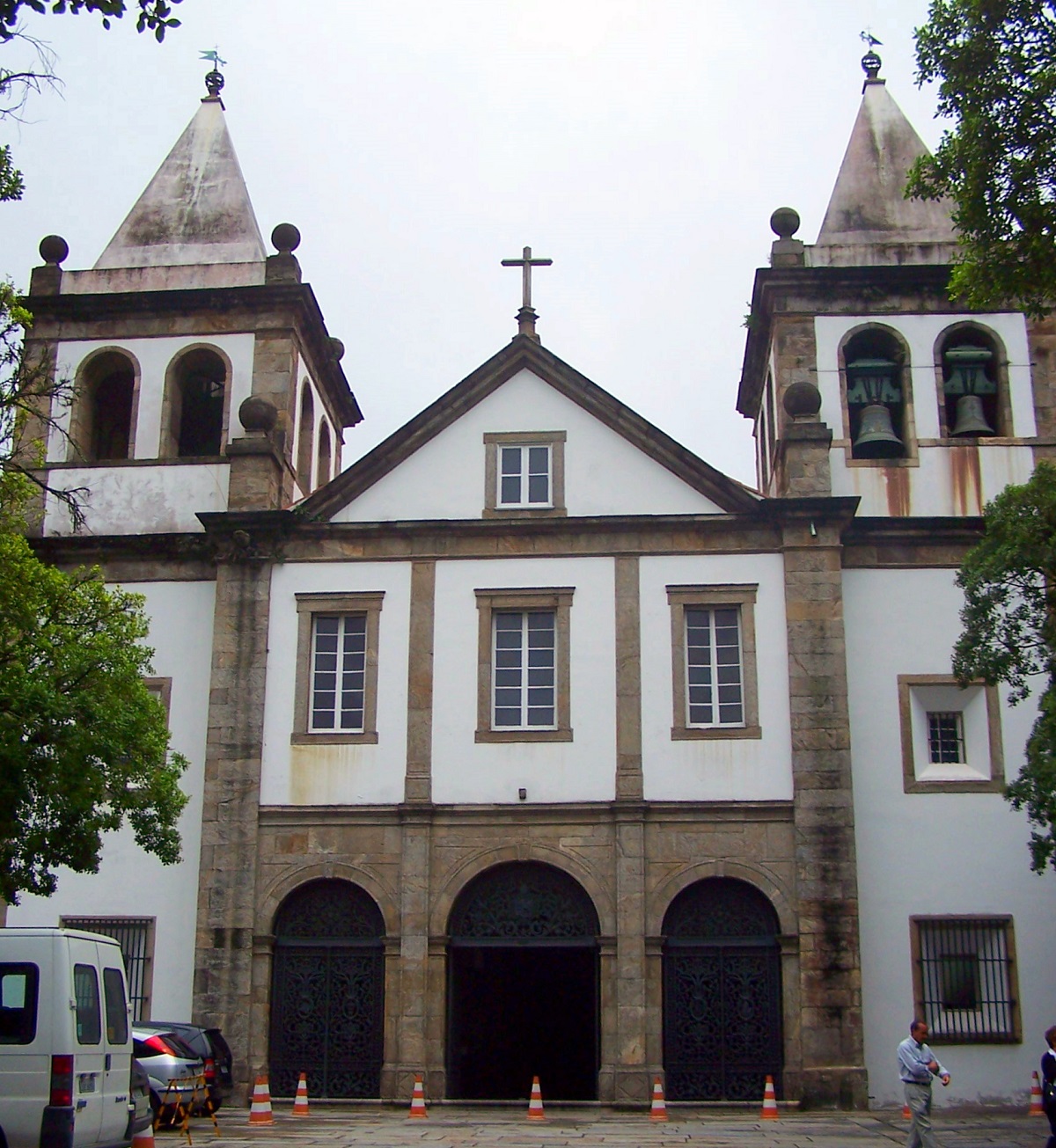
Mosteiro de São Bento is a monastery founded by Benedictine monks who had come to Rio de Janeiro from Bahia in 1590. The monks were given a plot of land by Manoel de Brito and his son Diogo de Brito as a donation so they could establish a church and a monastery in a well-situated place.
However, some years passed before the construction of the Mosteiro de São Bento started. The monks earned money for the construction through, among other things, the cultivation of sugar cane, and over the years they appointed the Portuguese military engineer Francisco Frias de Mesquita to design the monastery, whose first buildings were erected by the engineer from 1617.
The lavishly decorated monastery church was built from 1633, and the architectural inspiration came from Portuguese Mannerism, a style between the Renaissance and the Baroque. The plan was for the church to be completed in 1671, but it was built on in the 18th century. As a result, the interior decoration with, among other things, a lot of gilding extended into the Baroque and Rococo periods.
Pão de Açúcar means Sugar Peak, nicknamed Sugar Loaf Mountain, and it is a famous granite promontory at 396 meters in height. The mountain is shaped like an old-fashioned sugar top, which is solid crystallized sugar in a cone shape. Pão de Açúcar stands very beautifully in nature facing the Atlantic Ocean, and it is one of Rio de Janeiro’s natural landmarks.
In 2006, Pão de Açúcar became part of the natural monument Monumento Natural Dos Morros Do Pão De Açúcar e Da Urca, which also covers the rounded mountain Morro da Urca, which is an extension of Sugar Peak. The two mountains lay as an island until 1697, when infilling made the island a peninsula connected to the central part of Rio de Janeiro.
The name Sugar Peak originates from the 16th century, when the Portuguese sugar cane trade was at its peak in Brazil. Since then, the distinctive mountain has served as a navigation point for the entry to the Brazilian port city, and today it is yachts that sail the central part of Rio de Janeiro.
In 1907, the Brazilian engineer Augusto Ferreira Ramos had the idea of connecting the peaks of the peninsula with a cable car, and in 1912 the first version of the cable car was completed. You can still enjoy the trip to the top on a breathtaking cable car ride with unique and unforgettable views along the way in modern 360° cabins. From the city, you first go to Morro da Urca and from there to the top of Pão de Açúcar.
Antiga Sé is a beautiful church in central Rio de Janeiro that previously had the status of the city’s cathedral. The history of the church began as a small chapel built by the Carmelite Order after its establishment in Rio de Janeiro in 1590. Throughout the 17th and 18th centuries, the order expanded the chapel with convent buildings and a larger church, before the current Antiga Sé was built from about 1761.
The church was inaugurated in 1770 with a beautiful rococo interior, which was executed by Inácio Ferreira Pinto, who was among the leading artists in his field in Rio de Janeiro. The church’s status changed after the later King João VI’s arrival in the city in 1808. The Crown Prince brought his court with him, and the family had to use buildings for residences, etc. The Carmelite church was made into a royal chapel on that occasion, and it quickly achieved the status of Rio de Janeiro’s cathedral.
After Brazil’s independence from Portugal in 1822 and the establishment of the country as an empire, many significant events took place in the cathedral. The imperial coronations of Pedro I in 1822 and Pedro II in 1841 were held here, and it was also here that the Constitution of Brazil was signed by Pedro I. With the transition from monarchy to republic in 1889, the church lost its status as an imperial chapel, but it continued to be Rio de Janeiro’s cathedral until 1976.
Today, you can still enjoy the old cathedral’s fantastic church rooms with gilded wooden decorations. Inácio Ferreira Pinto’s beautiful woodwork is complemented by his correspondingly fine main altar. You can also notice José Leandro de Carvalho’s oval paintings of Jesus’ disciples, which are placed between the church’s balconies.
Arcos da Lapa is an aqueduct, also known as the Carioca Aqueduct/Aqueduto da Carioca. The 270-meter-long and 64-meter-high aqueduct was built from 1718 to 1750 and stands in the Lapa district of central Rio de Janeiro as a beautiful example of engineering in Portuguese colonial architecture.
The aqueduct was built to provide clean water for Rio de Janeiro’s growing population. At that time, the city center was surrounded by swampy areas with poor quality water, and drinking water was transported manually from springs some distance from the city. At the beginning of the 17th century, there were plans for canals from the river Rio Carioca to the city, but these were not completed.
It was instead in the 18th century that the water was transferred from the Carioca River to the city center and fountains. The first aqueduct was completed in 1723, but it was too small, and therefore the military engineer José Fernandes Pinto Alpoim was appointed to build a new one. With inspiration from Portugal, the current Arcos da Lapa was completed in 1750.
Over the years, the water in the Rio Carioca could not supply the growing city with enough water, and therefore the water from other creeks was also added to Rio de Janeiro’s water supply. At the end of the 19th century, other solutions had been established to ensure sufficient water in Rio de Janeiro, and therefore Arcos da Lapa was taken out of operation.
In 1896, the old aqueduct was instead rebuilt to function as a bridge for the Bonde de Santa Teresa tram line. The line connects the hilly areas of the district of Santa Teresa with central Rio de Janeiro, and the Bonde de Santa Teresa serves to the delight of locals and tourists alike as the only remaining of the city’s old tram lines.
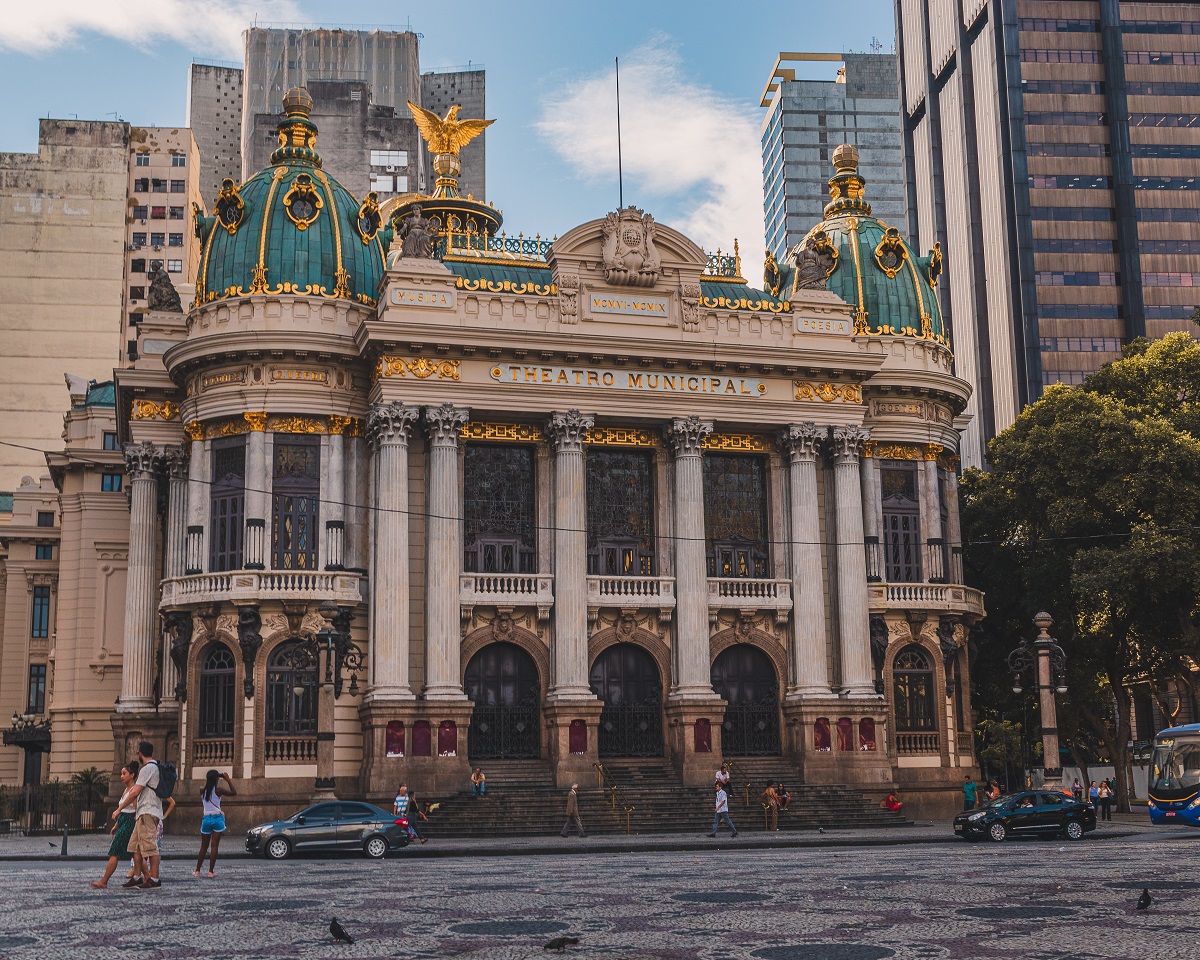
Theatro Municipal is Rio de Janeiro’s beautiful opera house. The history of the theater goes back to the end of the 19th century, when Rio de Janeiro was the capital of Brazil. The then two theaters in the city were not up to date, and it was decided in the 1890s that a new theater building should be built based on the French model.
However, it took until after the turn of the century before construction started. The Theatro Municipal was thus built in the years 1905-1909 with inspiration from the Garnier Opera House in Paris. Stylistically, the beautiful building stands in the era’s art nouveau and eclecticism. It was also a time when boulevards were laid out and beautiful buildings erected as symbols of modern Brazil.
Over the years, there were many opera productions and concerts with the Rio de Janeiro Symphony Orchestra on the stage of Theatro Municipal. Today there are many ballet performances and classical concerts in the beautiful setting. Inside, you can see, among other things, sculptures by Henrique Bernardelli and paintings by Rodolfo Amoedo and Eliseu Visconti as part of the magnificent decoration.
The Museu Nacional de Belas Artes is Brazil’s national art museum. The museum was founded in 1937 and inaugurated by President Getúlio Vargas two years later. From the beginning, the museum was one of Brazil’s leading cultural institutions, and this is still the case with the fine art collection you can experience on a visit here.
The foundation of the collection was established long before the museum itself, as the institution was founded not least on the basis of the art collection that the Portuguese king took with him to Brazil when he moved the court here from Lisbon in 1808. When the Portuguese king later returned to Portugal, he left large parts of the royal art collection, and the many works from here still form the core of the museum’s European collection.
You can see both Brazilian and international art in the beautiful museum building, which was built as the Escola dea Belas Artes art academy from 1905 to 1908. It was the Spanish architect Adolfo Morales de los Ríos who designed the building with inspiration from, among other things, the Louvre in Paris. The architecture became a mixture of styles, which you can see in the different styles of the facades.
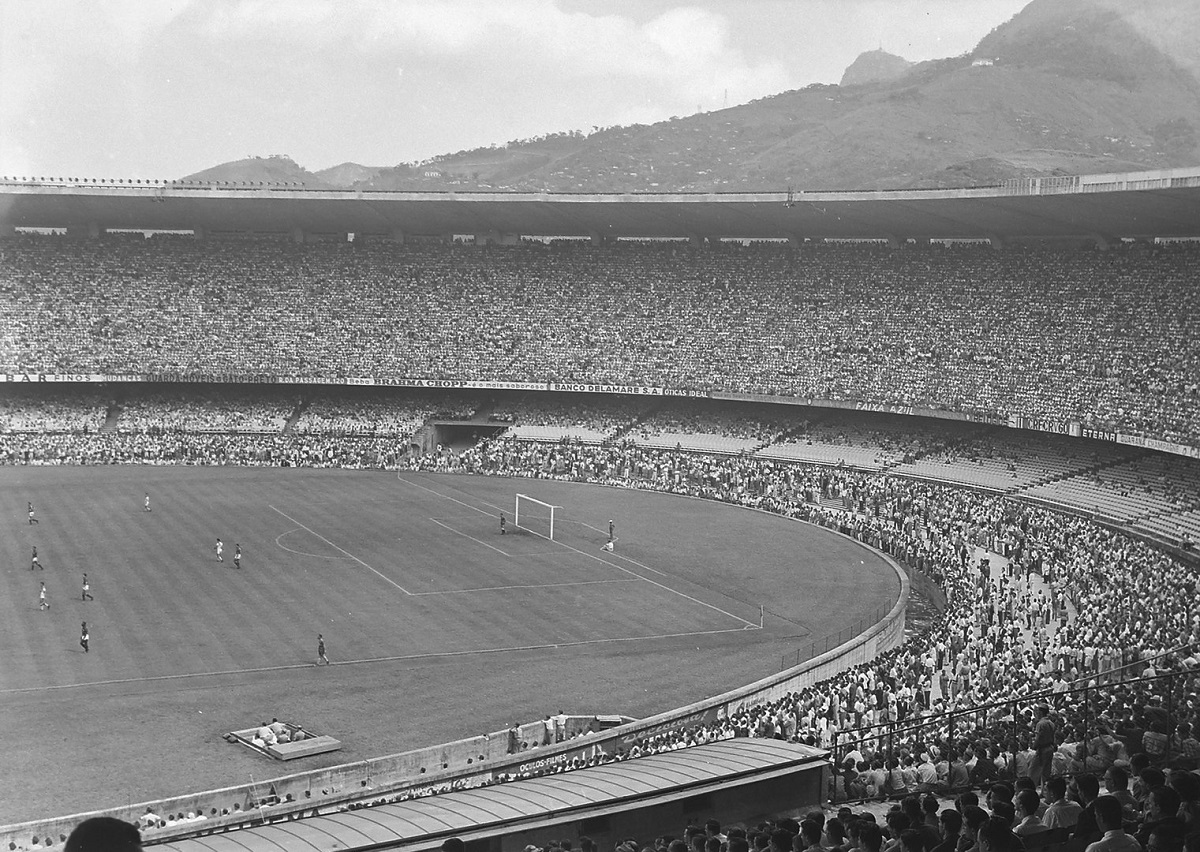
Estádio do Maracanã is the name of Rio de Janeiro’s huge football stadium, named after the neighborhood of Maracanã where the river Rio Maracanã flows. The large stadium is the world’s largest football stadium, and it is regularly used by the well-known Brazilian football clubs Flamengo and Fluminense.
The Estádio do Maracanã was inaugurated in 1950 as the Estádio Municipal, and it happened in connection with the fourth FIFA World Cup, which was played in Brazil on 24 June-16. July. The final match of the championship was played in front of at least 199,954 spectators and saw Uruguay win 2–1 over Brazil, making Uruguay world champions for the second time.
Over the years, Estádio do Maracanã has been home to many major sporting events and concerts. In addition to the World Cup in 1950, the final of the World Cup in football was also played in 2014, where Germany defeated Argentina 1-0. The 2016 Summer Olympics were also held at the stadium, where the Copa América trophy, the South American football championship, has also been played.
Santa Teresa is a cozy neighborhood in Rio de Janeiro, located on the Santa Teresa hill close to the center of the Brazilian metropolis. The neighborhood arose in the middle of the 18th century, when it spread around the convent Convento de Santa Teresa. It developed through the 19th century and the beginning of the 20th century to become a well-to-do neighborhood with many large villas.
Today, Santa Teresa is known for the area’s many narrow and crooked streets, which exude an atmosphere from the otherwise historic Rio de Janeiro. Therefore, the area is a popular place for both locals and tourists with a number of cafes, restaurants, galleries and small shops. You can advantageously walk the streets around the Escadaria Selarón stairs, which are a series of brightly colored staircases that the Chilean artist Jorge Selarón created from 1990 to 2013 as his contribution to the Brazilian people.
There are more things to see in Santa Teresa beyond the neighborhood’s streets and great atmosphere. You can visit the Museu da Chácara do Céu art museum, where you can enjoy Raymundo Ottoni de Castro Maia’s fine art collection with works by, among others, Henri Matisse and Jean Metzinger. You can also visit the Museu do Bonde, a museum of the famous trams that still run to Santa Teresa from the center of Rio de Janeiro via the Arcos de Lapa.
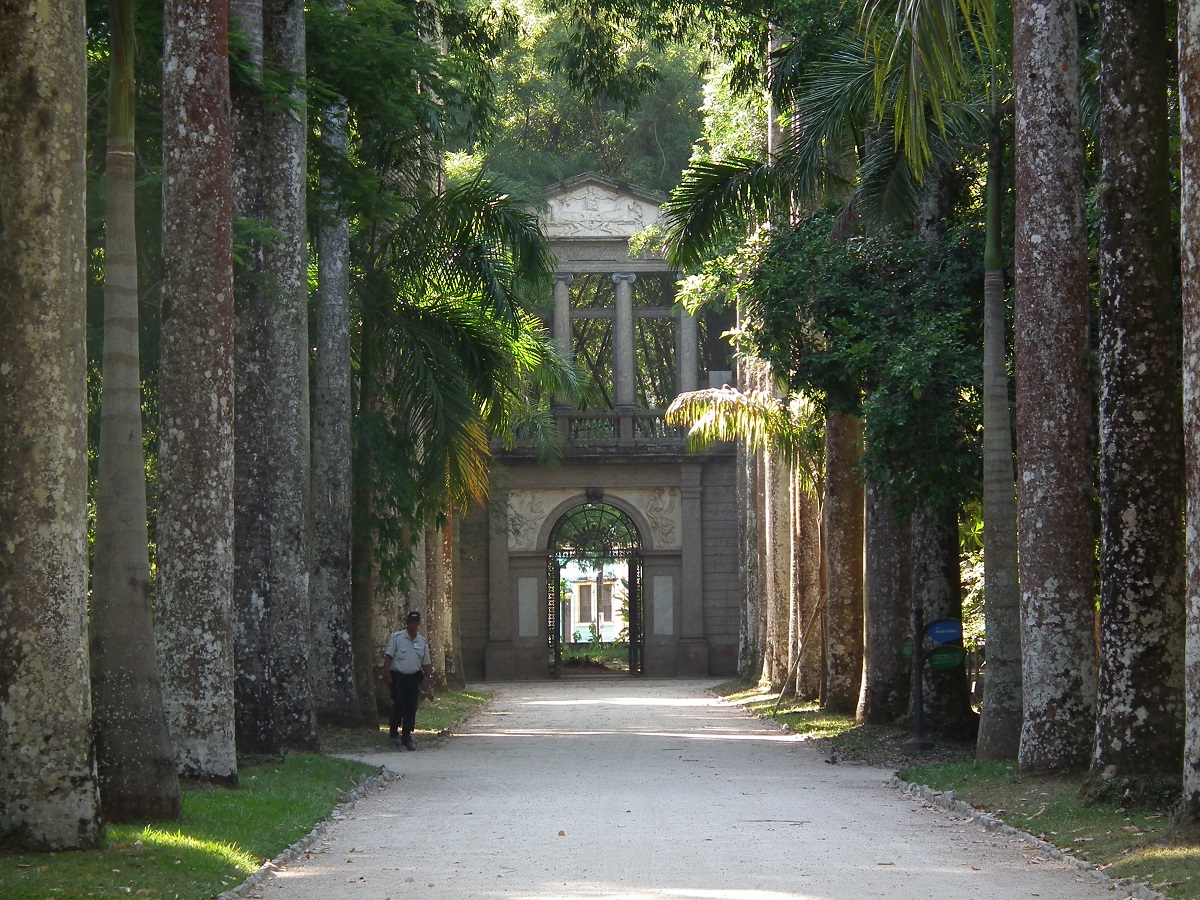
Jardim Botânico is Rio de Janeiro’s botanical garden, and it belongs among the world’s most beautiful and fascinating botanical gardens. It is located in a large and lush area, where there is a large representation of Brazilian and foreign flora, and you can enjoy around 6,500 species in the open air and in the garden’s greenhouses.
The botanical garden was founded by King João VI in 1808 as a place to acclimatize plants from the Caribbean, but the site was opened to the public in 1822. Among the many plants in the garden are many hundreds of types of palms, and they already start with to impress from the entrance. Here lies a long palm avenue with palm trees that all originate from the mother palm tree Palma Mater.
On a stroll in the Jardim Botânico there are countless beautiful places to enjoy. This applies, among other things, to the elegant Japanese garden Jardim Japonês and the lake environment Lago Amazônico, which is one of the garden’s water systems. You can also experience an orchid garden and other facilities, and then you should also look up a little to the many species of birds that live in the botanical garden.
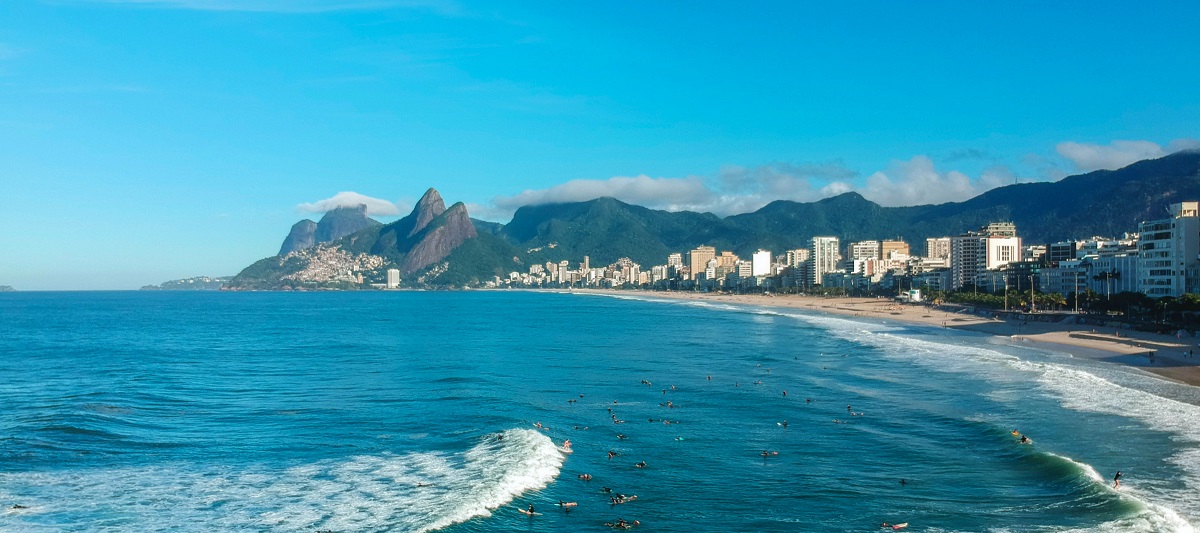
Praia de Ipanema is one of the most famous beaches in Rio de Janeiro. Located in Zona Sul, it was immortalized through the boosa nova song Garota de Ipanema, also known as The Girl from Ipanema. The music of the 1962 hit was written by Antônio Carlos Jobim and the Portuguese lyrics by Vinícius de Moraes.
A visit to Ipanema’s long, lovely sandy beach makes it easy to understand why the area has become popular. You wouldn’t think so when you consider that Ipanema means ‘bad water’ in the indigenous Tupi language. However, the name originates from the São Paolo area, where the baron of Ipanema, José Antonio Moreira Filho, came from. He once owned most of what is now Ipanema in Rio de Janeiro, which he named after a river from his home region.
Today you can enjoy some wonderful trips to the beautiful beach, where there is always a lot going on. Here are sunbathers, surfers, footballers and many others who enjoy outdoor life along the water. You can also enjoy beautiful sunsets from the beach, where the mountains Pedra da Gávea and Dois Irmãos stand characteristically as an end to the sand and the city.
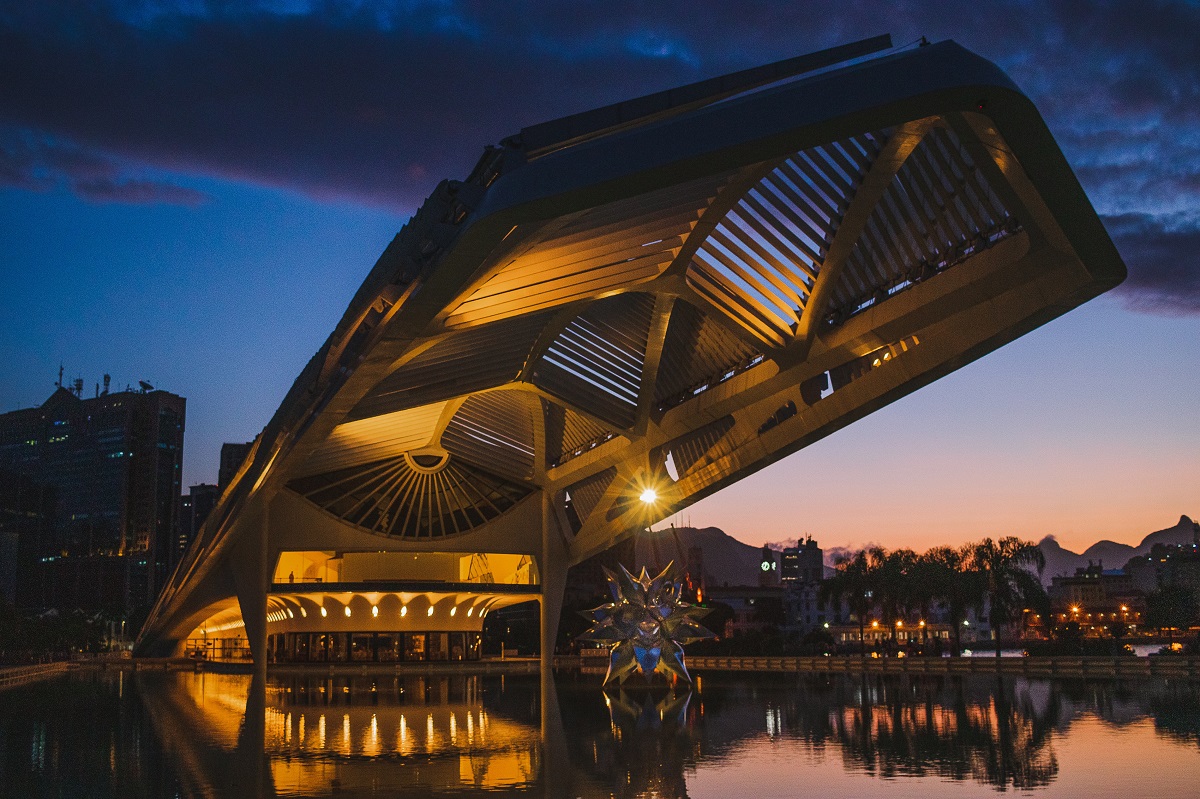
Museu do Amanhã is an exciting science museum that also stands as one of Rio de Janeiro’s famous works of modern architecture. The museum opened in 2015 in the architecturally interesting building designed by the Spanish architect Santiago Calatrava. The building is beautifully located on a former harbor pier, which is why there is water on three sides of the museum.
At the Museum of the Future, there are a number of themed exhibitions on topics that are important to the planet in a natural scientific direction. You can visit exhibitions about the cosmos, the Earth, the era we are in today and the future. There is also a focus on a sustainability and ecological world, so the varied exhibitions offer something for every taste in the field of tension between natural science, technology and time.
Museu de Arte Moderna do Rio de Janeiro is a museum of modern art located in the northern part of Parque de Flamengo, one of the city’s major recreational areas. Flamengo Park was built in the 1950s and 1960s, and this also applied to the modernist museum building, which was completed in 1955.
The museum was designed by the Brazilian architect Affonso Eduardo Reidy, and at the museum you can see Burle Marx’s modernist museum garden. There is also a theater in the museum complex, which of course also exhibits modern art. You can experience a permanent collection and changing exhibitions.
If you have time for it, you can also take a stroll in Flamengo Park, which stretches with shady trees along the Flamengo district along the sandy beach. Immediately south of the museum you can see the Monumento Nacional aos Mortos da Segunda Guerra Mundial, which is a monument to fallen Brazilians during the Second World War. If you continue, you will pass the Marina da Glória marina before reaching the Praia do Flamengo beach.
Ilha Fiscal is a small island located in the bay of Baía de Guanabara immediately off Rio de Janeiro. The island’s name alludes to finances, customs and taxes, and Ilha Fiscal also got its name from its use as the seat of the city’s customs authorities during the Portuguese colonial era. On the island you can see a castle-like building, and it was built in the 19th century under Pedro II.
You can walk to Ilha Fiscal from the center of Rio de Janeiro. On the way to the old customs building, you pass the island of Ilha das Cobras. The building was the centerpiece of the famous Baile da Ilha Fiscal, a ball held on November 9, 1889. The ballet is called the last dance of the empire because, after a coup d’état, the monarchy was replaced by a proclaimed republic just six days after the great event .
Throughout the 20th century, the building on Ilha Fiscal has been home to several public institutions within, among other things, navigation and oceanography. Today the site is maintained by the Brazilian Navy, and on Ilha Fiscal there is also a cultural history museum.
The Igreja de Nossa Senhora da Penha is a Catholic church located in a fantastic location just north of the center of Rio de Janeiro. Located on a small hilltop with a panoramic view of the region, the church is dedicated to Our Lady of the Peña de Francia Mountain, the patron saint of the Salamanca province in Spain.
It is believed that a chapel was built on the granite ridge in 1635. The staircase with the 382 steps in the granite ridge was carved out of the granite in 1819 and in 1870 the first church was built and it was extended with the characteristic towers in the year 1900. The architecture is eclectic and a mix of styles, including Neo-Gothic elements. Inside, you can see a beautifully decorated interior kept in mainly light blue and golden shades.
Igreja São José is a beautiful baroque church in central Rio de Janeiro. The history of the church started in 1608, when the hermit Egas Muniz built it as a small hermitage. Muniz’s chapel came to function as a parish church from 1659 and later also as a cathedral, and the chapel was continuously expanded.
The current Igreja São José was built from 1807, and it was consecrated in 1842 with a spacious nave in beautiful late baroque architecture with rococo decorations. There are several fine works of art in the church, the general decoration of which is also an impressive sight.
The Igreja de São Francisco de Paula is a Catholic church located in the historic center of Rio de Janeiro. The church is located in the Largo de São Francisco square, which was one of the city’s most important from the 18th century and the following centuries.
The construction of the church started in 1759, but it was over a hundred years before Emperor Pedro II could participate in the dedication in 1865. Before then, the church space had been beautifully decorated in neoclassicism in the mid-19th century. It is a beautiful church where you can also enjoy a fine main altar and the Nossa Senhora da Vitória chapel.
Palácio Imperial is Rio de Janeiro’s historic residence of first the country’s Portuguese royal family and then the Brazilian emperors. The palace’s formal name is Saint Christopher’s Palace/Paço de São Cristóvão, and it is located in the Quinta da Boa Vista park, which was originally an area cultivated by the Jesuits. When the Jesuits were expelled from colonial Brazil in 1759, their land was distributed to several private owners.
In the beginning of the 19th century, the Portuguese merchant Elias António Lopes built his mansion here, from which there was a fine view of the bay of Baía de Guanabara, and hence the name Quinta da Boa Vista. When Portugal’s crown prince João VI came to Rio de Janeiro in 1808, Elias António Lopes presented his mansion to the crown prince, who was so pleased with it that it became the royal residence and was expanded in the years 1819-1821.
In 1822, Brazil became an independent empire, and Emperor Pedro I continued to reside here, and successor Pedro II was born in the palace. At the beginning of the Imperial period, the Paço de São Cristóvão was significantly expanded and a major reconstruction was carried out into a neoclassical architecture. The renovations took place continuously over several decades, when the imperial families lived here. With the transition to the republic in 1889, the palace was abandoned.
In 1892, the Brazilian National Museum was moved here, and with it the palace was rebuilt for the new purpose, which went beyond a number of rooms and halls. In return, fine collections from Brazil’s history were moved here, where they could be enjoyed together with individual preserved rooms from the imperial era until 2018, when a fire ravaged the palace. In the fire, large parts of the palace and the National Museum’s irreplaceable collections went up in smoke.
Paço Imperial is a building that was built from 1738 as the residence of the Portuguese governors of colonial Brazil. It was the military engineer José Fernandes Pinto Alpoim who was responsible for the construction, which was completed in 1743. The engineer took the city’s existing mint as a starting point, which was developed as a residence in the Baroque era. The style is preserved to this day.
Paço Imperial is located in the central square Praça XV de Novembro, where Rio de Janeiro’s former cathedral is also located. The square was laid out by José Fernandes Pinto Alpoim in connection with the construction of the governor’s residence, and in the middle of the square the fountain was later set up, which can still be seen in the middle of the green area. The fountain was shipped here from Lisbon.
When Brazil’s colonial government moved from Salvador to Rio de Janeiro in 1763, the governor’s residence became the seat of the Portuguese viceroy, and the house was on that occasion made the Paço dos Vice-Reis. In 1808, the house changed its name again, this time to Paço Real in connection with the arrival of the Portuguese Crown Prince in Rio de Janeiro after leaving Portugal due to the Napoleonic Wars. The emperors retained the place as an administrative seat after the start of the empire in 1822.
With the Republic of Brazil, the Paço Imperial was no longer used as before, and the former palace was converted into the city’s central post office. Facades and furnishings were changed significantly, but in 1980 a major restoration of the Paço Imperial started, which, based on paintings, was brought back to its appearance around the year 1818. Since 1984, it has been the seat of cultural institutions, and it functions as a cultural and exhibition center.
Niterói is a city that is like a little sister to Rio de Janeiro on the east coast of the Bay of Guanabara. You can easily get here via the 13 kilometer Ponte Rio-Niterói bridge, which was the second longest bridge in the world when it opened in 1974. You can also choose an atmospheric boat trip between the center of Rio and Niterói.
Founded by the tupi chief Araribóia on November 22, 1573, Niterói stands out as a Brazilian city established by a non-Christian indigenous Brazilian. Over time, Niterói has developed into a metropolis in its own right, and there are several interesting sights, one of which is the view to the west of Rio de Janeiro.
In central Niterói is the Praça São João square, where to the west you can see the Paço Municipal de Niterói building, which was commissioned in 1914 as the city’s town hall. Opposite the town hall stands the Catedral Metropolitana São João Batista, Niterói’s cathedral. The cathedral was built from 1842 and consecrated in 1854 in the presence of Emperor Pedro II.
You can also walk to Niterói’s waterfront west of Praça São João. Here you can see architect Oscar Niemeyer’s architecturally exciting theater, Teatro Popular Oscar Niemeyer, which was opened in 2007. Access to the theater is via a spiral ramp, and the curved lines of the architecture are one of the city’s landmarks. A little south of the center of Niterói, you can visit the Niterói Museum of Contemporary Art/Museu de Arte Contemporânea de Niterói, which is also Niemeyer’s work and an attraction in itself.
The Museu de Arte Contemporânea de Niterói is a well-known art museum located in the city of Niterói. The city is part of Rio de Janeiro, but it is located on the east coast of the Bay of Guanabara and thus opposite central Rio. The art museum displays contemporary art and it opened in 1996.
The museum building was designed by Brazilian Oscar Niemeyer, and it stands on top of a small cliff facing the water. Niemeyer’s design is 16 meters high and contains a kind of flat dome 50 meters in diameter. The distinctive UFO-like building is one of the most distinctive in Rio de Janeiro.
At the museum you can see one of Brazil’s finest collections of contemporary art. A large part of the works come from João Sattamini’s collections, which he started in the 1950s. You can see many fine works, and the trip to the museum is extra interesting because of Niemeyer’s building, which offers a panoramic view over the water to Rio de Janeiro’s distinctive contours.
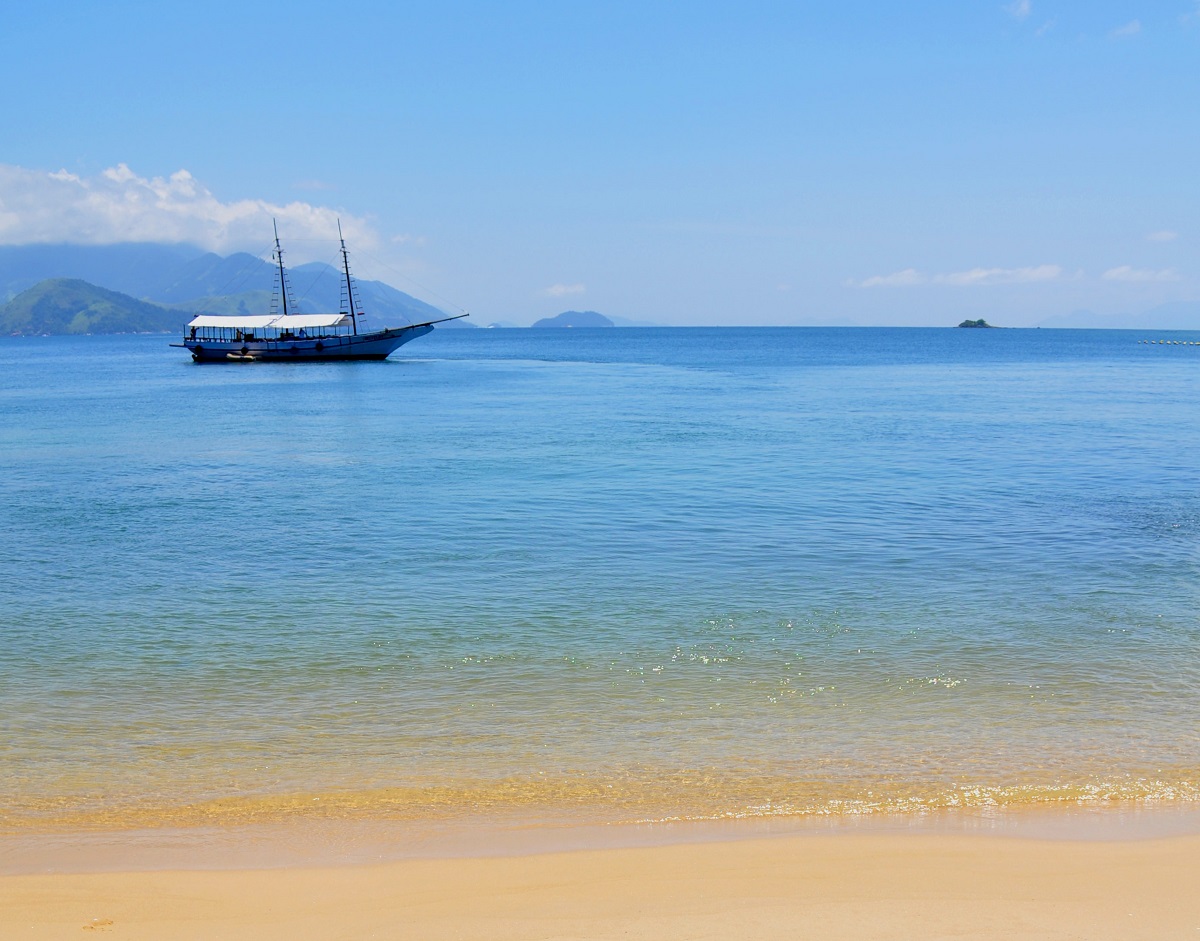
Ilha Grande is a 193 square kilometer island located off the coast along the state of Rio de Janeiro and west of the city of the same name. You can sail here from the Brazilian mainland to the main town of Vila do Abraão, which is located in the north-eastern part of the island. Vila do Abraão is the starting point for tours around the sparsely populated island. The tours take place on footpaths, because motorized means of transport are not allowed on the island.
Ilha Grande was home to a leper colony for many years, and then a high-security prison was built here, and the two things meant that they did not allow general migration and settlement. As a result, Ilha Grande remained almost uninhabited and with large areas of unspoiled nature.
Ilha Grande is today a popular excursion destination with many beautiful beaches and the unspoilt nature, which peaks with Pico da Pedra D’Água, which is 1,031 meters high. The island is a paradise of clear water, beaches and palm trees, which gives a good impression of the rest of Brazil’s varied and beautiful coastlines. The island’s preserved rainforest forms an immensely rich ecosystem, and it is not without reason that Ilha Grande has been a UNESCO World Heritage Site since 2019.
Parque Nacional da Tijuca is the name of the largest Brazilian natural area located in the major urban areas. The national park is located in a large area that begins just a few kilometers west of the center of Rio de Janeiro, and therefore the park is an easy way to get out into nature.
Tijuca National Park does not consist of original forest, as the area is the result of extensive planting. In the 18th century, the area’s forests were felled for firewood and to make room for coffee cultivation and cattle ranching. However, the exploitation of nature meant that the area’s rivers no longer provided a stable water supply for the growing metropolis.
Emperor Pedro II established state control of the area in 1861, and then a large-scale reforestation of the bare hills and abandoned fields began. The work was done by six slaves named Eleutério, Constantino, Manuel, Mateus, Leopoldo and Maria, who from 1861 to 1887 planted over 100,000 trees.
Today, Parque Nacional da Tijuca spreads over almost 40 square kilometers, and there is a beautiful and varied landscape that you can experience on a trip here. Among other things, you can see the mountain peaks Pedra da Gávea, Corcovado and Pico da Tijuca, which reach heights of 844 metres, 710 meters and 1,022 metres, respectively.
Corcovado is also the place where Rio de Janeiro’s Christ statue stands, so many people visit the park on a trip to the statue. However, there is also much else to see along the park’s many hiking routes. There are, for example, approximately 30 waterfalls and the viewing pavilion Vista Chinesa, from which you have one of the park’s most beautiful panoramic views.
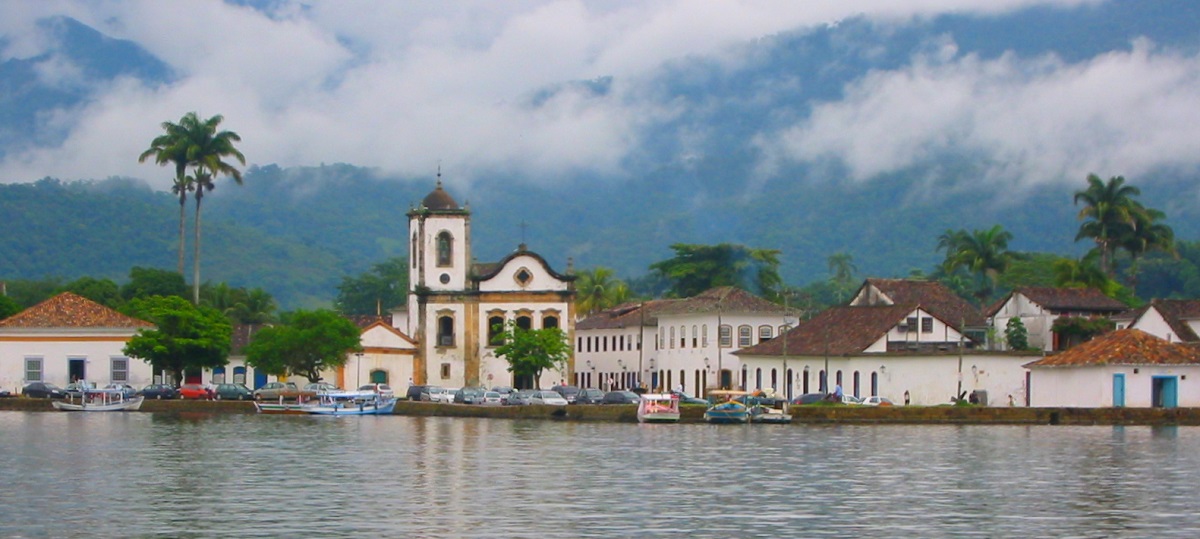
Parati is one of the most idyllic towns near Rio de Janeiro. A visit to Parati is like stepping back into Portuguese colonial times, as much of the city has not changed in the past 200 years. At the same time, it is a big contrast to Rio de Janeiro with its modest size of just over 40,000 inhabitants. The name Parati or Paraty comes from the original Tupi people’s name for the area and it means the river with fish.
Paraty was established as a Portuguese village in 1597, and it formally became a city in colonial 1667. The city’s development really took off when large gold discoveries were made in the mountains of Minas Gerais. Parati became a shipping port at the end of the road from Diamantina in Minas Gerais, and as a result a lot of gold came through the city on the way to Rio de Janeiro and Portugal. The gold finds became smaller over the years, and a direct road to Rio de Janeiro was established, and there were times of decline in Parati from the end of the 18th century.
Today, Parati is known for its historic old town, where there are cobbled streets and old buildings that together create a lovely atmosphere from the city’s colonial days. The district is car-free, and horses and carriages make the atmosphere even better. There are several old churches dating back to the 1720s and you can also see the old forts Forte Defensor and Forte Patitiba.
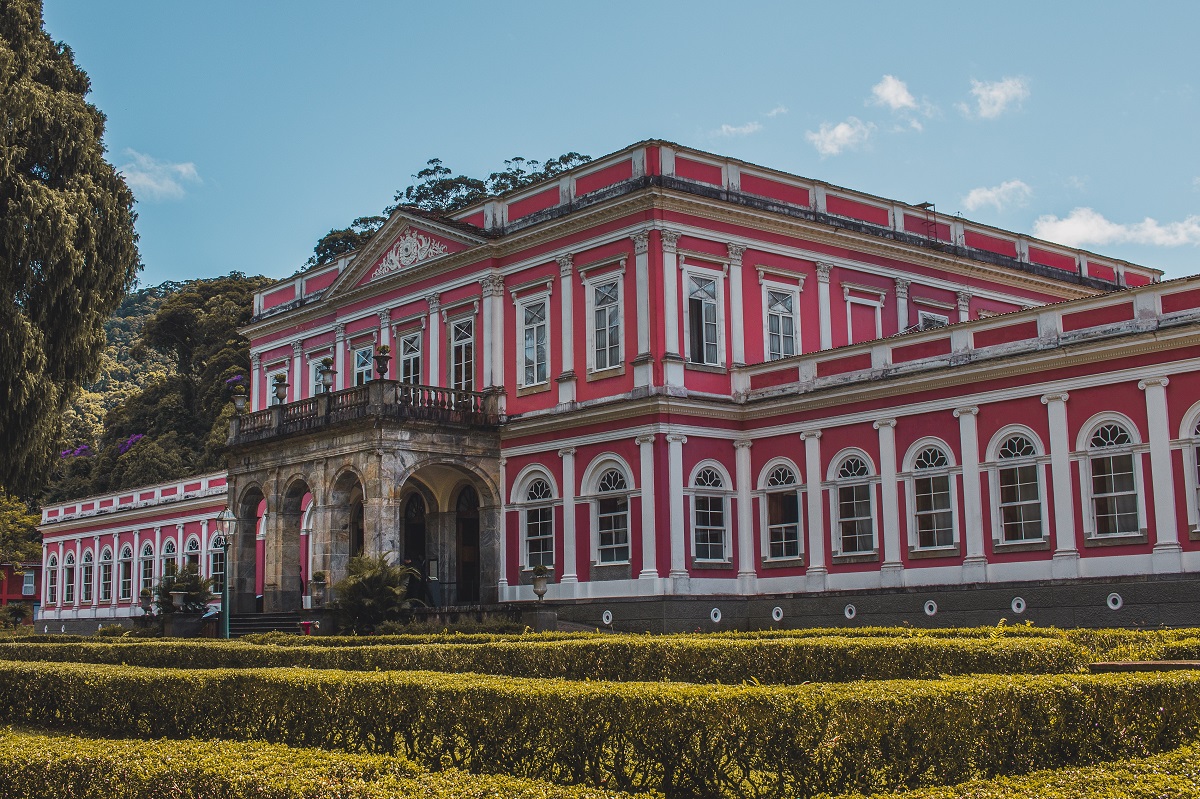
Petrópolis is a city that is also known as the Imperial City of Brazil. It is also a city that was founded by an emperor and named after an emperor. Pedro I passed through the area on his way between Rio de Janeiro and Minas Gerais in 1822, staying overnight with a priest. The emperor was so pleased with the pleasant climate that he acquired a piece of land in 1830 and built a summer palace on the site.
Pedro I’s palace was not completed, however, because the emperor had to abdicate in 1831. Instead, it was Emperor Pedro II who founded a new city on the site in 1843. This was done to give German immigrants a place to settle, and the emperor also built a summer palace, completed in 1847. Petrópolis became the de facto capital of Brazil during the summer when the emperor and court moved here.
In 1889, Brazil became a republic, but Petrópolis remained a central city in the country’s political life, with presidents continuing to use the city as a summer residence. For the purpose, the Palácio Rio Negro mansion was purchased and it is still one of the official presidential residences in Brazil. There are also quite a few other sights in the city, and they stand as good examples from Petrópolis’ history.
One of the city’s highlights is the Cathedral of São Pedro de Alcântara, also simply called the Petrópolis Cathedral. The cathedral is Catholic, and the Neo-Gothic building was constructed from 1884 to 1925. In the same year, the late Emperor Pedro II and his Queen Teresa Cristina were transferred to the cathedral, where they were given their final resting place in 1939. The tombs can still be seen and are historic with Pedro II’s status as the country’s last emperor.
In Petrópolis you can also see the city’s old imperial castle, which Pedro II built in neoclassicism from 1845. The beautiful castle was designed by the architect Julius Friedrich Koeler, and today it is set up as the museum Museu Imperial de Petrópolis. At the museum, you can see the interior of the castle and a number of significant effects in relation to Brazil’s imperial families, such as Pedro II’s crown. Around the castle you can enjoy the old castle park with trees from all over the world, which Pedro II himself took part in planning.
Avenidas das Americas 4666
barrashopping.com.br
Botafogo
botafogopraiashopping.com.br
Rua Barão de São Francisco, Teodoro da Silva
iguatemirio.com.br
Rua do Passeio 42-56
lojasamericanas.som.br
Barra da Tijuca
nycc.com.br
Avenida Lauro Mueller 116
Estrada da Gavea 899
São João de Meriti
shoppinggranderio.com.br
Leblon
shoppingleblon.com.br
Campo Grande
westshopping.com.br
Rua da Alfândega, Rua Uruguaiana, Rua Buenos Aires, Rua Gonçalves Dias, Largo da Carioca, Rua Nossa Senhora de Copacabana, Rua Visconde
AquaRio
Via Binario do Porto 194, Praca Muhammad Ali
aquariomarinhodorio.com.br
Museu Aeroespacial
Avenida Marechal Fontenelle 2000, Campo dos Afonsos
fab.mil.br/musal
Museu do Trem
Rua Arquias Cordeiro 1046
rffsa.gov.br
Museu Naval e Oceanográfico
Rua Dom Manuel 15
marinha.mil.br/museu-naval
Jardim Zoológico
Parque Quinta da Boa Vista
rio.rj.gov.br/riozoo
visitbrasil.com/rio-de-janeiro
The first European presence in the present Rio de Janeiro area occurred in January 1502 when the Portuguese explorer, Gaspar de Lemos, headed an expedition sailing to the Gulf of Guanabara. They thought the bay had to be the mouth of a river, and so they called it Rio de Janeiro, which means the January river in Portuguese.
For decades, France sought influence in the area, and in 1555, under Admiral Villegaignon’s leadership, they occupied the areas around the Gulf of Guanabara, but after several battles they had to leave the country a few years later.
At the foot of the Sugar Summit, Estácio de Sá founded in 1565 the city of São Sebastião do Rio de Janeiro, named after the Portuguese king. The city was well situated with its natural harbor in the Gulf of Guanabara, but still close to the Atlantic Ocean, from which the city was exposed to repeated looting from, not least, enemies of Portugal.
Portugal was colonizing colossal Brazil, and to avoid the conquests of other Europeans, they founded many new cities. Rio de Janeiro was also made the second regional administrative center after Salvador to the north. In this way, a faster expansion in the southern part of the colony could be ensured.
For the first several years, economic development was slow, and Rio de Janeiro was a small city. Only slowly the region was cultivated, but production increased, and by the end of the 1600s sugar cane production was considerable and the largest export product.
At the beginning of the 18th century, gold was found in Minas Gerais, northwest of Rio de Janeiro inland. A gold fever erupted, attracting people from both Portugal and the other regions of Brazil. The King of Portugal decided that all gold from Brazil should be shipped from Rio de Janeiro, creating economic growth and growth in the city’s population.
In 1763, Rio de Janeiro was made Brazil’s only administrative center and thus in effect the capital of the colony, which naturally led to some new public institutions in the Portuguese administration.
The Portuguese king, Dom João VI, was forced to leave his homeland during Napoleon’s conquests in Portugal in 1808, and on that occasion he moved his entire court to Rio de Janeiro. The generous status of the city created additional buildings, including the king’s residence, and it added to the city a cultural wealth it had not previously enjoyed. The Kingdom’s official capital was moved to Rio de Janeiro, which was also the European capital.
In 1821, Dom João VI returned to Lisbon, and the following year his son declared Brazil independently and appointed himself Emperor Pedro I. He maintained Rio de Janeiro as its capital.
Emperor Dom Pedro I sacked the government in 1831, and after major riots and a failed reestablishment of political rule, he left Brazil, boarded a British warship and handed the throne to his 5-year-old son, who became Emperor Dom Pedro II in 1,841th
Rio de Janeiro developed rapidly through the latter half of the 19th century. The railroad came to town in 1858, and 10 years after, the first tram ran in the city streets. An increasing number of people came to Rio de Janeiro, which put pressure on the development of new urban areas.
In the early 1900s, a major expansion of the city started. In the center, wider boulevards were built, and Zona Sul, located south of the center and the through mountains, was planned. This started the life around Copacabana Beach, which had previously been outside Rio de Janeiro. Copacabana Palace Hotel was one of the most fashionable hotels in the American continents in the 1930s, and during this period the city established its name as the capital of beaches and the joy of life.
The metropolis of São Paolo had gradually taken over Rio de Janeiro’s role as Brazil’s economic locomotive, while through the 20th century a number of cultural institutions were established in the capital. In 1905, construction of the city’s new theater was started, and many museums were established around the city’s many neighborhoods.
As the capital, Rio de Janeiro, with the rising tourism, continuously attracted masses of people from mainly Brazil’s poorer northeastern regions. They settled on the northwestern edge of the city, eventually developing into colossal neighborhoods with millions of inhabitants. The neighborhoods, the so-called favelas, often consisted of very temporary housing, and they lived their own lives far from tourists’ Rio de Janeiro, which was primarily the southern Zona Sul.
For years, it had been debated whether the capital of Brazil should be moved inland to develop the area. It became a reality in 1960, when Brasilia was created, thereby ending Rio de Janeiro’s status as the country’s capital.

Rio de Janeiro, Brazil
Overview of Rio de Janeiro
Rio de Janeiro is one of the few cities in the world bringing as much joy and happiness just to hear the name of it. Here you will find samba style football, the colorful annual carnival, beaches of Copacabana and Ipenema, the Corcovado tram line and many other sights and activities which will make the trip memorable.
The highlights of the city are literally the distinctive Sugarloaf Mountain and the impressive Christ the Redeemer statue, which embraces and views upon the entire Rio de Janeiro. A trip to the statue is a must on a trip to the charming Brazilian metropolis. The statue and the panoramas from here are unforgettable.
In addition to the many opportunities for swimming and relaxing, Rio de Janeiro is also a city with a great cultural offer. Fine museums and interesting church buildings are numerous, and the cariocas, which is the local name for Rio de Janeiro’s inhabitants, make a difference as well. Their mood and happiness will surely go to you as a visitor.
About the Whitehorse travel guide
Contents: Tours in the city + tours in the surrounding area
Published: Released soon
Author: Stig Albeck
Publisher: Vamados.com
Language: English
About the travel guide
The Whitehorse travel guide gives you an overview of the sights and activities of the Canadian city. Read about top sights and other sights, and get a tour guide with tour suggestions and detailed descriptions of all the city’s most important churches, monuments, mansions, museums, etc.
Whitehorse is waiting for you, and at vamados.com you can also find cheap flights and great deals on hotels for your trip. You just select your travel dates and then you get flight and accommodation suggestions in and around the city.
Read more about Whitehorse and Canada
Canada Travel Guide: https://vamados.com/canada
City tourism: https://visitwhite-horse.ca
Main Page: https://www.vamados.com/
Buy the travel guide
Click the “Add to Cart” button to purchase the travel guide. After that you will come to the payment, where you enter the purchase and payment information. Upon payment of the travel guide, you will immediately receive a receipt with a link to download your purchase. You can download the travel guide immediately or use the download link in the email later.
Use the travel guide
When you buy the travel guide to Whitehorse you get the book online so you can have it on your phone, tablet or computer – and of course you can choose to print it. Use the maps and tour suggestions and you will have a good and content-rich journey.

Arcos da Lapa is an aqueduct, also known as the Carioca Aqueduct/Aqueduto da Carioca. The 270-meter-long and 64-meter-high aqueduct was built from 1718 to 1750 and stands in the Lapa district of central Rio de Janeiro as a beautiful example of engineering in Portuguese colonial architecture.
The aqueduct was built to provide clean water for Rio de Janeiro’s growing population. At that time, the city center was surrounded by swampy areas with poor quality water, and drinking water was transported manually from springs some distance from the city. At the beginning of the 17th century, there were plans for canals from the river Rio Carioca to the city, but these were not completed.
It was instead in the 18th century that the water was transferred from the Carioca River to the city center and fountains. The first aqueduct was completed in 1723, but it was too small, and therefore the military engineer José Fernandes Pinto Alpoim was appointed to build a new one. With inspiration from Portugal, the current Arcos da Lapa was completed in 1750.
Over the years, the water in the Rio Carioca could not supply the growing city with enough water, and therefore the water from other creeks was also added to Rio de Janeiro’s water supply. At the end of the 19th century, other solutions had been established to ensure sufficient water in Rio de Janeiro, and therefore Arcos da Lapa was taken out of operation.
In 1896, the old aqueduct was instead rebuilt to function as a bridge for the Bonde de Santa Teresa tram line. The line connects the hilly areas of the district of Santa Teresa with central Rio de Janeiro, and the Bonde de Santa Teresa serves to the delight of locals and tourists alike as the only remaining of the city’s old tram lines.

Theatro Municipal is Rio de Janeiro’s beautiful opera house. The history of the theater goes back to the end of the 19th century, when Rio de Janeiro was the capital of Brazil. The then two theaters in the city were not up to date, and it was decided in the 1890s that a new theater building should be built based on the French model.
However, it took until after the turn of the century before construction started. The Theatro Municipal was thus built in the years 1905-1909 with inspiration from the Garnier Opera House in Paris. Stylistically, the beautiful building stands in the era’s art nouveau and eclecticism. It was also a time when boulevards were laid out and beautiful buildings erected as symbols of modern Brazil.
Over the years, there were many opera productions and concerts with the Rio de Janeiro Symphony Orchestra on the stage of Theatro Municipal. Today there are many ballet performances and classical concerts in the beautiful setting. Inside, you can see, among other things, sculptures by Henrique Bernardelli and paintings by Rodolfo Amoedo and Eliseu Visconti as part of the magnificent decoration.
The Museu Nacional de Belas Artes is Brazil’s national art museum. The museum was founded in 1937 and inaugurated by President Getúlio Vargas two years later. From the beginning, the museum was one of Brazil’s leading cultural institutions, and this is still the case with the fine art collection you can experience on a visit here.
The foundation of the collection was established long before the museum itself, as the institution was founded not least on the basis of the art collection that the Portuguese king took with him to Brazil when he moved the court here from Lisbon in 1808. When the Portuguese king later returned to Portugal, he left large parts of the royal art collection, and the many works from here still form the core of the museum’s European collection.
You can see both Brazilian and international art in the beautiful museum building, which was built as the Escola dea Belas Artes art academy from 1905 to 1908. It was the Spanish architect Adolfo Morales de los Ríos who designed the building with inspiration from, among other things, the Louvre in Paris. The architecture became a mixture of styles, which you can see in the different styles of the facades.

Estádio do Maracanã is the name of Rio de Janeiro’s huge football stadium, named after the neighborhood of Maracanã where the river Rio Maracanã flows. The large stadium is the world’s largest football stadium, and it is regularly used by the well-known Brazilian football clubs Flamengo and Fluminense.
The Estádio do Maracanã was inaugurated in 1950 as the Estádio Municipal, and it happened in connection with the fourth FIFA World Cup, which was played in Brazil on 24 June-16. July. The final match of the championship was played in front of at least 199,954 spectators and saw Uruguay win 2–1 over Brazil, making Uruguay world champions for the second time.
Over the years, Estádio do Maracanã has been home to many major sporting events and concerts. In addition to the World Cup in 1950, the final of the World Cup in football was also played in 2014, where Germany defeated Argentina 1-0. The 2016 Summer Olympics were also held at the stadium, where the Copa América trophy, the South American football championship, has also been played.
Santa Teresa is a cozy neighborhood in Rio de Janeiro, located on the Santa Teresa hill close to the center of the Brazilian metropolis. The neighborhood arose in the middle of the 18th century, when it spread around the convent Convento de Santa Teresa. It developed through the 19th century and the beginning of the 20th century to become a well-to-do neighborhood with many large villas.
Today, Santa Teresa is known for the area’s many narrow and crooked streets, which exude an atmosphere from the otherwise historic Rio de Janeiro. Therefore, the area is a popular place for both locals and tourists with a number of cafes, restaurants, galleries and small shops. You can advantageously walk the streets around the Escadaria Selarón stairs, which are a series of brightly colored staircases that the Chilean artist Jorge Selarón created from 1990 to 2013 as his contribution to the Brazilian people.
There are more things to see in Santa Teresa beyond the neighborhood’s streets and great atmosphere. You can visit the Museu da Chácara do Céu art museum, where you can enjoy Raymundo Ottoni de Castro Maia’s fine art collection with works by, among others, Henri Matisse and Jean Metzinger. You can also visit the Museu do Bonde, a museum of the famous trams that still run to Santa Teresa from the center of Rio de Janeiro via the Arcos de Lapa.

Jardim Botânico is Rio de Janeiro’s botanical garden, and it belongs among the world’s most beautiful and fascinating botanical gardens. It is located in a large and lush area, where there is a large representation of Brazilian and foreign flora, and you can enjoy around 6,500 species in the open air and in the garden’s greenhouses.
The botanical garden was founded by King João VI in 1808 as a place to acclimatize plants from the Caribbean, but the site was opened to the public in 1822. Among the many plants in the garden are many hundreds of types of palms, and they already start with to impress from the entrance. Here lies a long palm avenue with palm trees that all originate from the mother palm tree Palma Mater.
On a stroll in the Jardim Botânico there are countless beautiful places to enjoy. This applies, among other things, to the elegant Japanese garden Jardim Japonês and the lake environment Lago Amazônico, which is one of the garden’s water systems. You can also experience an orchid garden and other facilities, and then you should also look up a little to the many species of birds that live in the botanical garden.

Praia de Ipanema is one of the most famous beaches in Rio de Janeiro. Located in Zona Sul, it was immortalized through the boosa nova song Garota de Ipanema, also known as The Girl from Ipanema. The music of the 1962 hit was written by Antônio Carlos Jobim and the Portuguese lyrics by Vinícius de Moraes.
A visit to Ipanema’s long, lovely sandy beach makes it easy to understand why the area has become popular. You wouldn’t think so when you consider that Ipanema means ‘bad water’ in the indigenous Tupi language. However, the name originates from the São Paolo area, where the baron of Ipanema, José Antonio Moreira Filho, came from. He once owned most of what is now Ipanema in Rio de Janeiro, which he named after a river from his home region.
Today you can enjoy some wonderful trips to the beautiful beach, where there is always a lot going on. Here are sunbathers, surfers, footballers and many others who enjoy outdoor life along the water. You can also enjoy beautiful sunsets from the beach, where the mountains Pedra da Gávea and Dois Irmãos stand characteristically as an end to the sand and the city.

Museu do Amanhã is an exciting science museum that also stands as one of Rio de Janeiro’s famous works of modern architecture. The museum opened in 2015 in the architecturally interesting building designed by the Spanish architect Santiago Calatrava. The building is beautifully located on a former harbor pier, which is why there is water on three sides of the museum.
At the Museum of the Future, there are a number of themed exhibitions on topics that are important to the planet in a natural scientific direction. You can visit exhibitions about the cosmos, the Earth, the era we are in today and the future. There is also a focus on a sustainability and ecological world, so the varied exhibitions offer something for every taste in the field of tension between natural science, technology and time.
Museu de Arte Moderna do Rio de Janeiro is a museum of modern art located in the northern part of Parque de Flamengo, one of the city’s major recreational areas. Flamengo Park was built in the 1950s and 1960s, and this also applied to the modernist museum building, which was completed in 1955.
The museum was designed by the Brazilian architect Affonso Eduardo Reidy, and at the museum you can see Burle Marx’s modernist museum garden. There is also a theater in the museum complex, which of course also exhibits modern art. You can experience a permanent collection and changing exhibitions.
If you have time for it, you can also take a stroll in Flamengo Park, which stretches with shady trees along the Flamengo district along the sandy beach. Immediately south of the museum you can see the Monumento Nacional aos Mortos da Segunda Guerra Mundial, which is a monument to fallen Brazilians during the Second World War. If you continue, you will pass the Marina da Glória marina before reaching the Praia do Flamengo beach.
Ilha Fiscal is a small island located in the bay of Baía de Guanabara immediately off Rio de Janeiro. The island’s name alludes to finances, customs and taxes, and Ilha Fiscal also got its name from its use as the seat of the city’s customs authorities during the Portuguese colonial era. On the island you can see a castle-like building, and it was built in the 19th century under Pedro II.
You can walk to Ilha Fiscal from the center of Rio de Janeiro. On the way to the old customs building, you pass the island of Ilha das Cobras. The building was the centerpiece of the famous Baile da Ilha Fiscal, a ball held on November 9, 1889. The ballet is called the last dance of the empire because, after a coup d’état, the monarchy was replaced by a proclaimed republic just six days after the great event .
Throughout the 20th century, the building on Ilha Fiscal has been home to several public institutions within, among other things, navigation and oceanography. Today the site is maintained by the Brazilian Navy, and on Ilha Fiscal there is also a cultural history museum.
The Igreja de Nossa Senhora da Penha is a Catholic church located in a fantastic location just north of the center of Rio de Janeiro. Located on a small hilltop with a panoramic view of the region, the church is dedicated to Our Lady of the Peña de Francia Mountain, the patron saint of the Salamanca province in Spain.
It is believed that a chapel was built on the granite ridge in 1635. The staircase with the 382 steps in the granite ridge was carved out of the granite in 1819 and in 1870 the first church was built and it was extended with the characteristic towers in the year 1900. The architecture is eclectic and a mix of styles, including Neo-Gothic elements. Inside, you can see a beautifully decorated interior kept in mainly light blue and golden shades.
Igreja São José is a beautiful baroque church in central Rio de Janeiro. The history of the church started in 1608, when the hermit Egas Muniz built it as a small hermitage. Muniz’s chapel came to function as a parish church from 1659 and later also as a cathedral, and the chapel was continuously expanded.
The current Igreja São José was built from 1807, and it was consecrated in 1842 with a spacious nave in beautiful late baroque architecture with rococo decorations. There are several fine works of art in the church, the general decoration of which is also an impressive sight.
The Igreja de São Francisco de Paula is a Catholic church located in the historic center of Rio de Janeiro. The church is located in the Largo de São Francisco square, which was one of the city’s most important from the 18th century and the following centuries.
The construction of the church started in 1759, but it was over a hundred years before Emperor Pedro II could participate in the dedication in 1865. Before then, the church space had been beautifully decorated in neoclassicism in the mid-19th century. It is a beautiful church where you can also enjoy a fine main altar and the Nossa Senhora da Vitória chapel.
Palácio Imperial is Rio de Janeiro’s historic residence of first the country’s Portuguese royal family and then the Brazilian emperors. The palace’s formal name is Saint Christopher’s Palace/Paço de São Cristóvão, and it is located in the Quinta da Boa Vista park, which was originally an area cultivated by the Jesuits. When the Jesuits were expelled from colonial Brazil in 1759, their land was distributed to several private owners.
In the beginning of the 19th century, the Portuguese merchant Elias António Lopes built his mansion here, from which there was a fine view of the bay of Baía de Guanabara, and hence the name Quinta da Boa Vista. When Portugal’s crown prince João VI came to Rio de Janeiro in 1808, Elias António Lopes presented his mansion to the crown prince, who was so pleased with it that it became the royal residence and was expanded in the years 1819-1821.
In 1822, Brazil became an independent empire, and Emperor Pedro I continued to reside here, and successor Pedro II was born in the palace. At the beginning of the Imperial period, the Paço de São Cristóvão was significantly expanded and a major reconstruction was carried out into a neoclassical architecture. The renovations took place continuously over several decades, when the imperial families lived here. With the transition to the republic in 1889, the palace was abandoned.
In 1892, the Brazilian National Museum was moved here, and with it the palace was rebuilt for the new purpose, which went beyond a number of rooms and halls. In return, fine collections from Brazil’s history were moved here, where they could be enjoyed together with individual preserved rooms from the imperial era until 2018, when a fire ravaged the palace. In the fire, large parts of the palace and the National Museum’s irreplaceable collections went up in smoke.
Paço Imperial is a building that was built from 1738 as the residence of the Portuguese governors of colonial Brazil. It was the military engineer José Fernandes Pinto Alpoim who was responsible for the construction, which was completed in 1743. The engineer took the city’s existing mint as a starting point, which was developed as a residence in the Baroque era. The style is preserved to this day.
Paço Imperial is located in the central square Praça XV de Novembro, where Rio de Janeiro’s former cathedral is also located. The square was laid out by José Fernandes Pinto Alpoim in connection with the construction of the governor’s residence, and in the middle of the square the fountain was later set up, which can still be seen in the middle of the green area. The fountain was shipped here from Lisbon.
When Brazil’s colonial government moved from Salvador to Rio de Janeiro in 1763, the governor’s residence became the seat of the Portuguese viceroy, and the house was on that occasion made the Paço dos Vice-Reis. In 1808, the house changed its name again, this time to Paço Real in connection with the arrival of the Portuguese Crown Prince in Rio de Janeiro after leaving Portugal due to the Napoleonic Wars. The emperors retained the place as an administrative seat after the start of the empire in 1822.
With the Republic of Brazil, the Paço Imperial was no longer used as before, and the former palace was converted into the city’s central post office. Facades and furnishings were changed significantly, but in 1980 a major restoration of the Paço Imperial started, which, based on paintings, was brought back to its appearance around the year 1818. Since 1984, it has been the seat of cultural institutions, and it functions as a cultural and exhibition center.
Similar to Rio de Janeiro Travel Guide
